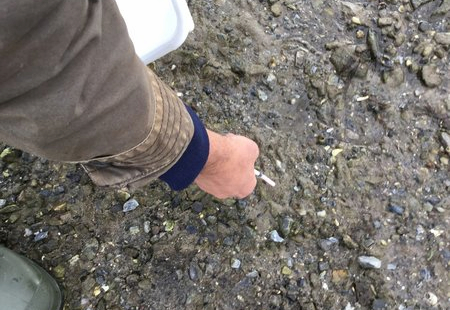Here at CEM we focus on cable bacteria. Have you ever heard about them? Do you know about them but want to dive deeper into their microscopic world?
Scroll down to see them featured in several videos, know some interesting facts about them, or if you feel adventurous enough and want to meet them in person, we are not keeping any secrets, here is a guide on how to find them yourself!
A collaboration with the science communication YouTube channel MinuteEarth, made possible by our former PhD and PostDoc, Robin Bonné.
Cable bacteria emerge out of the sediment at the bottom of the video and crawl outwards in the search for oxygen. We use this behavior when we want to do experiments with single cable bacteria.
Although cable bacteria are too big a mouthful for an amoeba, it can bend the long cables in the middle and then eat them like spaghetti. The amoeba is eating all the bacteria giblets (= sucking out the cytoplasm) and then spitting out an empty sheath.
A close up of the area where cable bacteria meet oxygen. The cables writhe and twist as they try to get into the oxygen, which you can see as a fuzzy area. In the oxic area, a lot of ciliates are grazing on bacteria, though the cables are too big for them.
Normally ciliates eat bacteria, but here the tables have turned. A ciliate has gotten caught in a loop made by a long cable bacterium t them, and is desperately trying to escape. Cable bacteria often move in such loop shapes, for reasons that are still unclear.










First, dig up a piece of sediment from your favourite beach or lake.

Pull apart your sediment in order to create a cleft.

Look really close in your cleft - perhaps you can see the cables al
Here is a video showing how to isolate and find the cable bacteria in tray of water.
We Only Discovered This 10 Years Ago - MinuteEarth (2024)
The truth about petri dishes - MinuteEarth (2024)
Anwendungen der Kabelbakterien in der Umwelt- und Biotechnologie - BIOspektrum (2024)
To myter om bakterier, som du skal pakke væk - Videnskab.dk (2023)
Kablet op til naturen (podcast) - Den2Radio (2019)
Fascinerende syn: Amøber æder lange kabelbakterier som spaghetti - Videnskab.dk (2017)